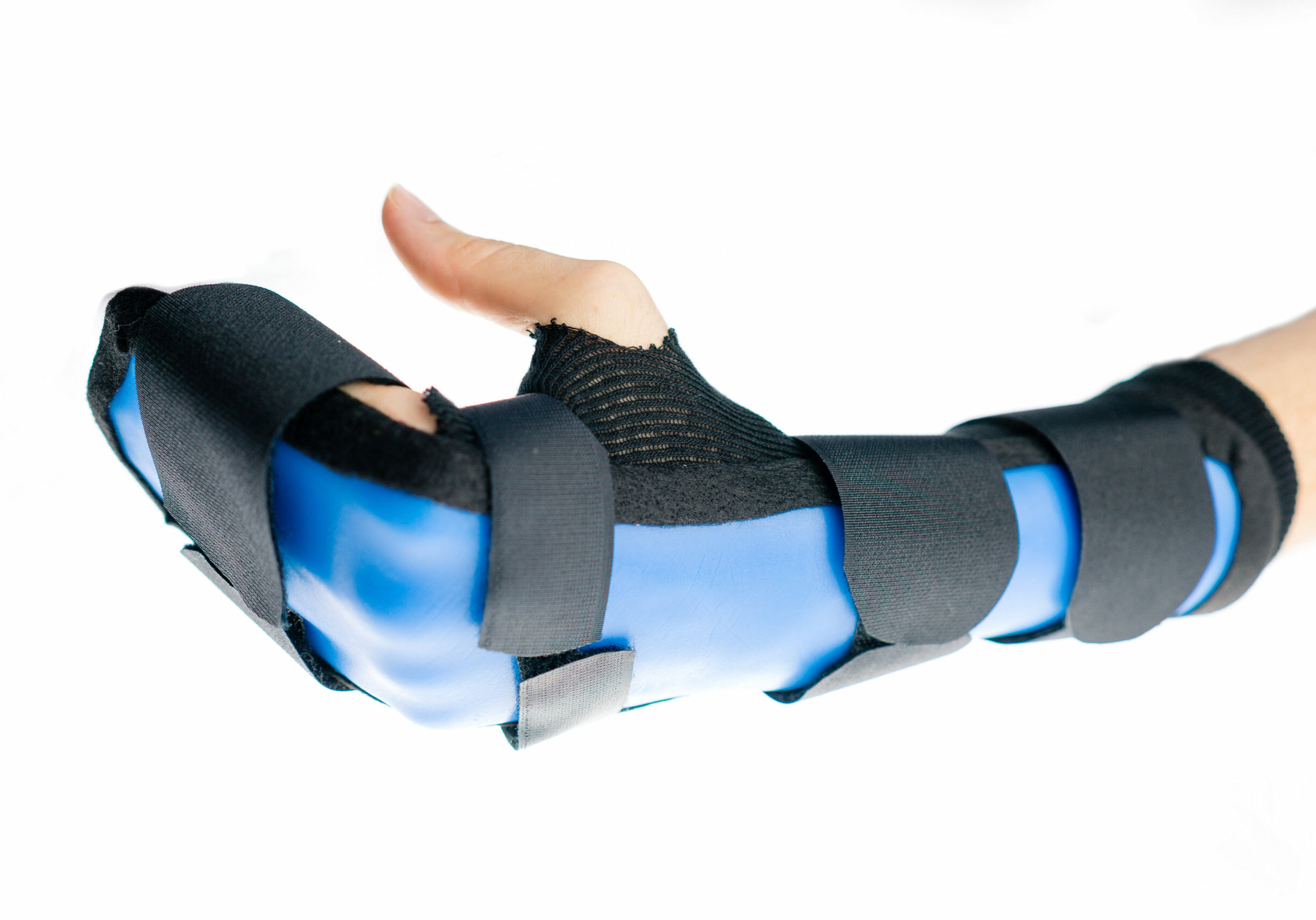J. F. Goubau, L. Goubau, A. Van Tongel, P. Van Hoonacker, D. Kerckhove, B. Berghs (2013).The wrist hyperflexion and abduction of the thumb (WHAT) test: a more specific and sensitive test to diagnose de Quervain tenosynovitis than the Eichhoff’s Test. J Hand Surg Eur Vol. 2014 Mar; 39(3): 286–292. Published online 2013 Jan 22. doi: 10.1177/1753193412475043
“The WHAT test is performed as follows: the wrist is hyperflexed and the thumb abducted in full MP and IP extension, resisted against the therapist’s index finger. Exacerbation of the symptomatology is considered a positive test result”.
The Skinny- When choosing a provocative test for De Quervain’s disease (De Quervain’s Tenosynovitis Test), therapists in the past have typically chosen from two popular tests; Eichoff’s test and Finkelstein’s test. The latter often being confused with the first. This study compares Eichoff’s test to a new test called The Wrist Hyperflexion and Abduction of the Thumb test (wrist hyperabduction test – WHAT). The study included 100 patients experiencing de Quervain tendinopathy between the years 2007-2010.
In The Weeds-Each patient underwent the Eichoff’s test and the WHAT test in random order by two experienced hand surgeons (test for de quervain’s tenosynovitis). Each provocative testing procedure was carried out in the same sequence to ensure consistency. Patients who tested positive under either test were sent for X-ray and ultrasonography to confirm the diagnosis of de Quervains.
Results: Ninety-three ultrasounds were positive and seven were negative. The accuracy of Eichoff’s test was .84 while the accuracy of the WHAT test was .94, suggesting that the latter performs better overall in establishing the correct diagnosis. The WHAT test also produced a better sensitivity at .99 and specificity at .29.
Bring it Home- A new test known as the WHAT test was developed due to the controversy associated with the accuracy of Eichoff’s test, and also the need for a more patient-friendly test for use in daily practice. This study found the WHAT test to be superior in all categories. This may be due in part to the specific mechanics of the WHAT test, positioning the anatomy in a way to accurately detect even the earliest symptoms.
This study was transparent about their methodology and had well thought out methods including sequence protocols for each provocative test for consistency, random order, and a large sample size. Using ultrasound technology to confirm the results of the in-clinic provocative testing provides a reliable diagnosis for comparison. Detailed explanations of the WHAT test were also provided along with pictures and illustrations of the anatomy, showing the superior mechanism of the test.
2 Comments
Leave a Comment
More To Read
Pediatric Hand Development as it relates to Hand Therapy
Pediatric Hand Therapy and Hand Development by Chelsea Gonzalez It is essential to have an understanding of the major milestones of grasp and upper extremity development when working with younger kiddos so that therapy complements the changes naturally occurring in the brain at each age-level. It is important that babies and toddlers progress through each…
Read MoreFactors that influence orthosis adherence in patients with acute traumatic tendon injuries to the hand
Savaş, S., & Aydoğan, Ç. (2020). Factors affecting orthosis adherence after acute traumatic hand tendon repairs: A prospective cohort study. Journal of Hand Therapy, S0894113020301848. https://doi.org/10.1016/j.jht.2020.10.005 World Health Organization. (2003). Adherence to long-term therapies: evidence for action. World Health Organization. The Skinny Adherence to orthosis wear is vital for protecting healing tendons after a traumatic tendon…
Read MoreEffects of Training Task on Intermanual Transfer in Upper-Limb Prosthetic Simulation
By: Emilee Saunders Romkema, S., Bongers, R. M., van der Sluis, C. K. (2017). Influence of the type of training task on intermanual transfer effects in upper-limb prosthesis training: A randomized pre-posttest study. PLoS ONE 12(11): e0188362. The Skinny: The purpose of this study was to see if training a “non-affected” arm will benefit the “affected” arm…
Read MoreSign-up to Get Updates Straight to Your Inbox!
Sign up with us and we will send you regular blog posts on everything hand therapy, notices every time we upload new videos and tutorials, along with handout, protocols, and other useful information.






I am looking forward to performing this test along with the Eichoff’s test. I think that if both are positive then it provides the physician with more information at their next MD appointment. I find that this diagnosis is often missed with my wrist sprain/strain patients.
Thank you for this information.
Nice post, I really appreciate you for sharing this informative post. Thanks